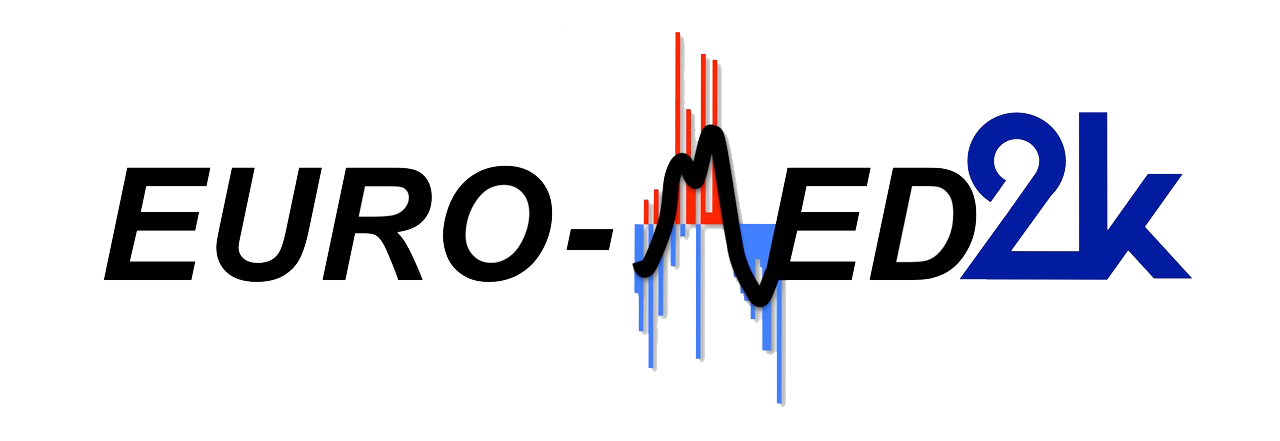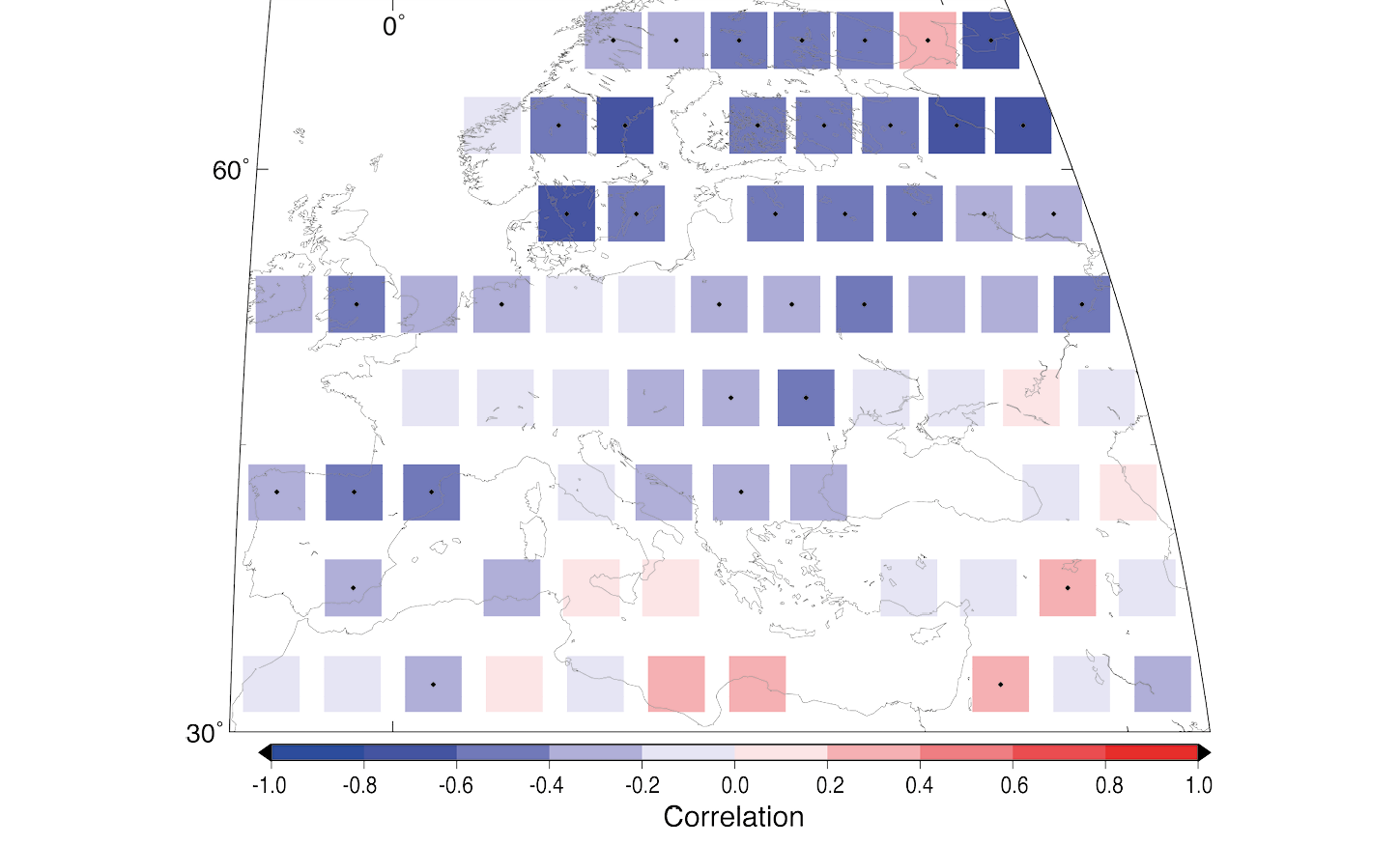- Home
- Publications
- PAGES Magazine
- Summer Temperature and Drought Co-variability
Summer temperature and drought co-variability
Ljungqvist FC, Krusic PJ, Luterbacher J, González-Rouco JF, García Bustamante E, Melo Aguilar CA & Werner JP
Past Global Changes Magazine
25(2)
112
2017
Fredrik Charpentier Ljungqvist1,2, P.J. Krusic3,4, J. Luterbacher5, J.F. González-Rouco6, E. García Bustamante7, C.A. Melo Aguilar6 and J.P. Werner8
Euro-Med2k workshop, Stockholm, Sweden, 1-2 December 2016
This workshop, hosted by the Bolin Centre for Climate Research and Department of Physical Geography at Stockholm University, marks the successful conclusion of Phase 2 of the PAGES Euro-Med2k working group. The objectives of the meeting were (1) to identify and document summer temperature and drought co-variability across Europe and the Mediterranean over the past millennium, and (2) to discuss opportunities for continuing the Euro-Med2k mandate after 2016.
Variations in the spatio-temporal distribution of droughts during past warm and cold periods arguably provide tentative information about future changes in European droughts associated with global warming. In light of recent progress in developing high-resolution European climate reconstructions, it is now, for the first time, possible to assess the co-variability between summer temperature and drought frequency and severity over the past millennium. To realize this goal, we use an updated version of the Old World Drought Atlas (OWDA; Cook et al. 2015), with its spatially resolved, tree-ring-based, summer drought index for the European-Mediterranean area extending back two millennia, and an updated version of the spatially resolved summer temperature reconstruction from tree-ring and historical documentary data by Luterbacher et al. (2016) extending back to 755 AD.
F. C. Ljungqvist opened the workshop by presenting the research background and a suggested outline for a proposed contribution to Climate of the Past. In this context, two recent studies by Hao et al. (2016) and Rehfeld and Laepple (2016) of East Asia were highlighted. Hao et al. (2016) found that hydroclimate patterns have varied considerably between different warm periods in eastern China over the past 2000 years. Rehfeld and Laepple (2016) found that the linkage between temperature and precipitation over Asia is timescale dependent, and that model simulations agree with proxy data on shorter timescales but disagree on longer timescales. These results, together with the Northern Hemispheric proxy–model comparison by Ljungqvist et al. (2016), indicate that the hydroclimate responses to low-frequency temperature changes are not yet sufficiently well known.
The Euro-Med2k group is committed to reduce this knowledge gap for the European-Mediterranean area by analyzing, in space and time, linkages between (1) 20th century instrumental temperature and drought data, (2) the gridded European temperature and drought reconstructions from 850 AD to the present, and (3) climate model simulations of summer temperature and soil moisture and precipitation from 850 AD to the present. It was decided to assess the co-variability from inter-annual to sub-centennial timescales, and to investigate potential changes in the dominant patterns of co-variability in relation to, or in tandem with, the timescales chosen. Preliminary results suggest that the co-variability between temperature and drought depends on the timescales chosen. Figure 1 shows an example of the correlations between simulated summer temperature and soil moisture over AD 850 to 1850 in Europe using the CCSM4 model.
The second part of the workshop was devoted to working in smaller groups with different tasks related to setting up experiments, discussing methods, and data–model intercomparisons. During the workshop, P. J. Krusic presented outlines for a new project regarding “European streamflow and drought: Continental scale outputs of the hydrological cycle”. In a further presentation, J. Luterbacher talked about the Tambora eruption in April 1815 and the subsequent “year without a summer 1816”, summarizing the current state of knowledge related to summer temperature and drought anomalies across different areas of the globe.
The last part of the workshop was devoted to discussions related to future collaborations within the Euro-Med2k working group after its official end in 2016. An agreement was reached to continue as an independent consortium, preferably in collaboration with PAGES, aiming for one meeting per year arranged by its members and their institutions. Over the past few years, Euro-Med2k has taken advantage of the spinoffs between the proxy and paleo-model communities and this was agreed to be an important aspect to continue pursuing.
affiliationS
1Department of History, Stockholm University, Sweden
2Bolin Centre for Climate Research, Stockholm University, Sweden
3Department of Geography, University of Cambridge, Cambridge, UK
4Department of Physical Geography, Stockholm University, Sweden
5Department of Geography, Climatology, Climate Dynamics and Climate Change and Centre of International Development and Environmental Research, Justus Liebig University of Giessen, Germany
6Department of Astrophysics and Atmospheric Sciences, Universidad Complutense de Madrid, Spain
7Unidad de Energía Eolica, Centro de Investigaciones Energéticas, Medioambientales y Tecnológicas (CIEMAT), Madrid, Spain
8Department for Earth Science and Bjerknes Centre for Climate Research, University of Bergen, Norway
contact
Fredrik Charpentier Ljungqvist: fredrik.c.l historia.su.se
historia.su.se
references
Cook ER et al. (2015) Sci Adv 1: e1500561
Hao Z et al. (2016) Int J Climatol 36: 467-475
Ljungqvist FC et al. (2016) Nature 532: 94-98


